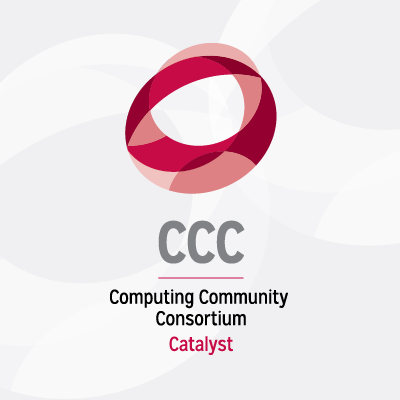
In our previous post, “From Science Fiction to Science Fact: Beth Mynatt Traces the Multi-Trillion Dollar Impact of Computing Innovation in the U.S.”, we explored how Beth Mynatt, Dean of the Khoury College of Computer Sciences at Northeastern University, highlighted the profound impact of federally funded computing research in her May keynote speech at the CCC Computing Futures Symposium, held in Washington, D.C.
While her keynote expertly mapped out the “tire tracks” of innovation — tracing ideas back and forth between university labs and companies, eventually contributing to trillion-dollar industries — a critical question lingers: In an era dominated by tech giants, why does government funding for academic research still matter?
Mynatt tackled this head-on, dispelling the assumption that these self-sufficient behemoths can handle all necessary research. “AI is our poster child for this,” she stated (see chapter 4 of the 2020 National Academies of Engineering report). “It was kept alive in universities for decades, and now we are seeing the huge fruits of that in industry.” She emphasized that even the wealthiest corporations are bound by shareholder demands, quarterly returns, and the need to focus research on identifiable, measurable profits. Academic research, by contrast, operates under different constraints, driven by curiosity and long-term vision, allowing for exploration that may not have immediate commercial viability but is crucial for future breakthroughs.
This relationship between industry and academia, Mynatt emphasized, should not be viewed as contentious but as hugely beneficial to both, and absolutely necessary for a prosperous research ecosystem and economy.
“For example, academia spearheads a lot of advancements in ‘public good technologies’ that may not generate significant profit but have immense societal value. Take assistive technologies, such as motorized wheelchairs and screen readers for example. While these niche markets may never drive profits for private companies, the existence and continuous improvement of these technologies, fueled by federal grants, enable individuals with disabilities to work, contribute to the economy, and reduce reliance on public assistance. These innovations translate into substantial economic benefits for the country as a whole, even though the market for this kind of technology may not be able to support, say, 10-plus years of research developing a self-driving wheelchair.”
Furthermore, academic research plays a vital role in areas where industry incentives are misaligned with public good. Mynatt highlighted how universities actively “poke holes” in new technologies, researching vulnerabilities in areas like privacy and security. Concepts like differential privacy, born from decades of university research, are now fundamental to protecting individual data in processes like the U.S. census. This independent scrutiny ensures that technologies are not only powerful but also safe and secure.
The “tire tracks” are not just about large tech companies. Mynatt underscored that the impact of federally funded research is embedded in every aspect of American life: from the food we eat to the healthcare we receive, the cars we drive, and the very infrastructure of the internet. It’s about a sprawling ecosystem of universities across the US, including land-grant institutions and their extension programs, directly helping farmers, manufacturers, and local healthcare providers “make things work.”
The risk of interrupting this “Endless Frontier” of research is profound. As Mynatt warned, “If you break it, it doesn’t just fix itself.” A “brain drain” of top talent moving to countries that are actively investing in research could lead to a long-term loss of global leadership and economic competitiveness for the U.S. Maintaining federal funding for academic research isn’t just an expense; it’s an investment in the future quality of life, economic prosperity, and global standing of the nation. It’s the “magic” that ensures the next wave of transformative innovations will emerge from American soil.









